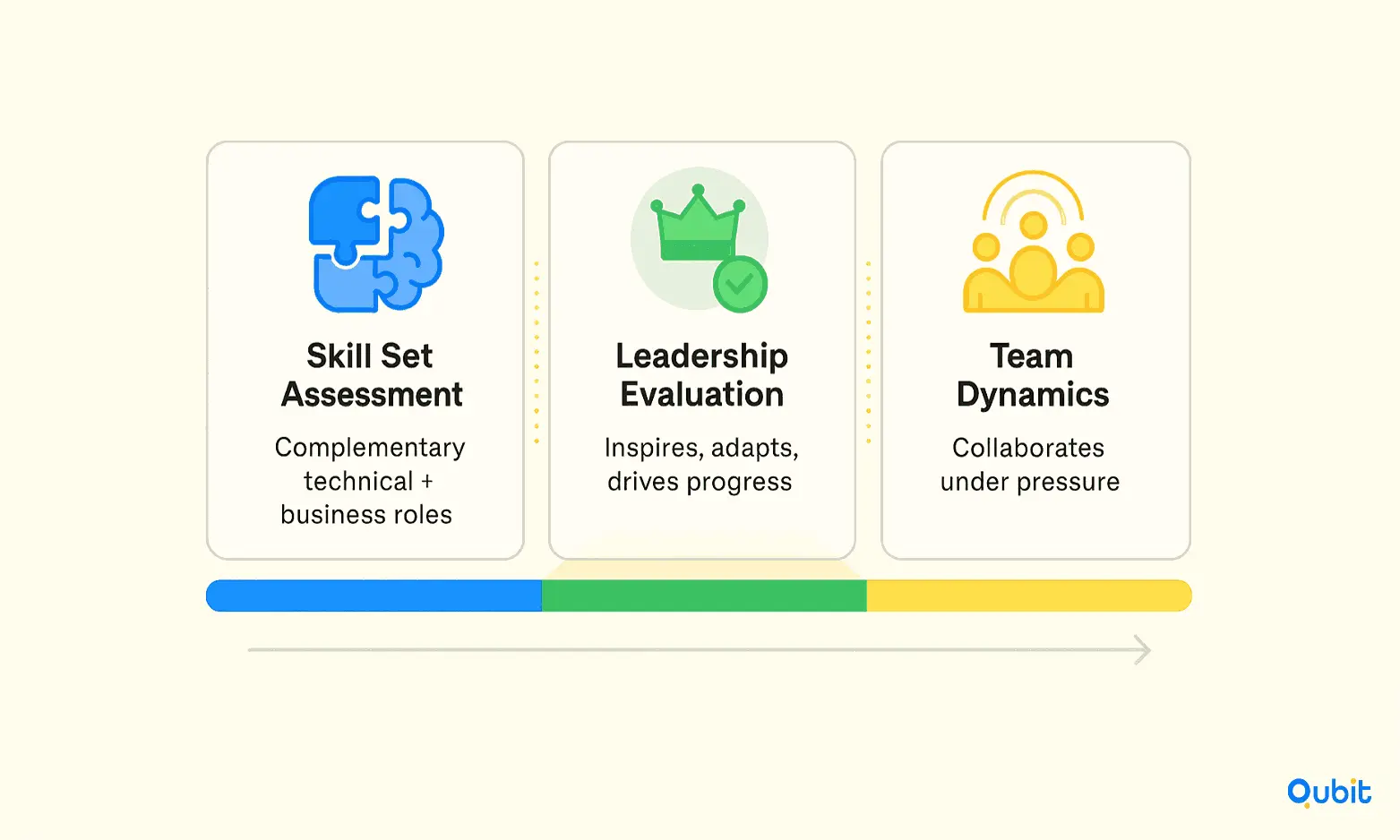Startup investments are inherently risky, with approximately 90% of startups failing overall. For investors, understanding the nuances of startup risk profiles is critical to making informed decisions and improving the alignment between startups and their funding sources. By systematically evaluating these risks, investors can identify opportunities that align with their goals while avoiding potential pitfalls.
Your risk profiling insights are further broadened when you integrate startup scouting strategies, which connect foundational early-stage scouting concepts with advanced evaluation methods. This blog delves into the importance of robust risk assessment, offering actionable strategies and real-world examples to enhance matching accuracy.
Startup Risk Profiling and Management
Understanding and managing risk is a cornerstone of startup success. Risk profiling, a process that evaluates and categorizes risk tolerance, plays a pivotal role in aligning investment strategies with a startup’s goals. By defining risk tolerances, whether aggressive, moderate, or conservative, startups can tailor their decision-making processes to match their growth ambitions. This approach not only helps in securing investor confidence but also lays the groundwork for sustainable expansion.
The Role of Risk Profiling Tools
Modern startups increasingly rely on advanced tools to assess and categorize risks. Questionnaires, algorithms, and data analysis are commonly used to evaluate risk tolerance, creating profiles that guide strategic decisions. Platforms like CyberSaint, a cybersecurity risk management and profiling solution, automate these assessments, ensuring startups can make informed decisions. For example, CyberSaint helps startups create a comprehensive cyber risk profile, which complements broader risk management efforts.
Why Risk Management Matters
Effective risk management is more than a safety net, it’s a strategic advantage. Startups that proactively plan for potential challenges can allocate resources wisely, develop contingency plans, and pursue calculated expansions. Consider Amazon’s growth strategy: the company expanded its product lines and international presence incrementally, balancing risk with opportunity. This approach, supported by robust risk profiling, allowed Amazon to diversify successfully. Startups can draw inspiration from such strategies to scale sustainably.
The Data Behind the Need
The statistics are sobering: 90% of startups fail overall, with 10% failing within the first year and 70% failing between years two and five. Additionally, 75% of venture-backed startups fail to provide returns to all equity holders. These figures underscore the importance of thorough due diligence and data-driven risk assessments. Without a clear understanding of potential pitfalls, startups risk becoming part of these statistics.
Strategic Expansion Backed by Data
Data-driven risk assessments are not just about avoiding failure, they’re about identifying opportunities. Startups that integrate risk profiling into their strategic planning can confidently explore new markets, products, or services. For instance, an e-commerce startup aiming to emulate Amazon’s diversified model can benefit from analyzing its risk profile and aligning its expansion strategy accordingly.
To further refine your startup’s risk assessment process, consider supplementing your efforts with investor questions before match. These inquiries can help pinpoint specific areas of risk and ensure compatibility with potential investors.
By prioritizing risk profiling and management, startups can transform uncertainty into a roadmap for growth.
Startup Team Risk Evaluation
Assessing the strength of a startup team is a critical step in identifying potential risks that could hinder success. Team dynamics, skill diversity, and leadership capabilities play pivotal roles in determining whether a startup can overcome challenges and scale effectively. Without a thorough evaluation, weaknesses in these areas can jeopardize the entire venture.

Why Team Risk Evaluation Matters
A startup’s team is its backbone, and any imbalance or misalignment can lead to failure. Evaluating team dynamics helps uncover potential friction points, such as poor communication or conflicting work styles. For instance, conducting in-depth interviews and observing how team members collaborate can reveal whether they possess the cohesion needed to tackle high-pressure situations. Similarly, assessing leadership qualities ensures that the founders have the vision and decision-making skills to guide the company through uncertainty.
Framework for Analyzing Team Risks
A structured approach to team evaluation involves three key components:
Skill Set Assessment
A well-rounded team combines technical expertise, business acumen, and creative problem-solving abilities. Startups with complementary skill sets are better equipped to address diverse challenges. For example, a founding team with one member focused on product development and another on marketing can create a balanced foundation for growth.Leadership Evaluation
Strong leadership is essential for maintaining focus and driving progress. Evaluating a leader’s ability to inspire, adapt, and make strategic decisions is crucial. Founders who lack these qualities may struggle to steer the startup in the right direction.Team Dynamics Analysis
Effective communication and collaboration are non-negotiable for startup success. Teams that foster trust and mutual respect are more likely to innovate and resolve conflicts constructively.
Real-World Example: Airbnb
Airbnb’s early success highlights the importance of a balanced team composition. The company’s founders—Brian Chesky, Joe Gebbia, and Nathan Blecharczyk, brought diverse skills to the table, including design, technical expertise, and business strategy. This complementary mix allowed them to address critical challenges and scale their platform globally. Their ability to work cohesively and leverage their strengths mitigated many of the risks typically associated with early-stage startups.
For a deeper understanding of how team evaluation aligns with broader risk analysis, consider exploring the importance of evaluating startup scalability. Combining insights from team assessments with scalability evaluations provides a comprehensive view of a startup’s potential.
By focusing on team risk evaluation, investors and stakeholders can make informed decisions, ensuring that the startups they support have the foundation needed to thrive.
Startup Risk/Reward Investment Profile
Startup investments often present a unique challenge: balancing the allure of high returns with the inherent risks involved. A well-structured risk/reward assessment is essential for evaluating these opportunities effectively. By analyzing potential rewards against associated risks, investors can derive a risk/reward ratio, a critical metric for ranking and comparing startups.
The Importance of Risk/Reward Analysis
Every startup carries its own set of uncertainties, from market volatility to operational hurdles. A detailed risk/reward assessment allows investors to quantify these uncertainties and weigh them against the potential upside. This process not only helps in identifying the most promising opportunities but also ensures that decisions are grounded in both data and strategic foresight.
However, numbers alone don’t tell the full story. Balancing quantitative metrics with qualitative insights—such as the startup’s vision, leadership, and adaptability—provides a more comprehensive evaluation. This dual approach ensures that investors are not only chasing returns but also aligning with ventures that resonate with their values and long-term goals.
Values-Based Alignment: A Key to Success
Beyond financial metrics, the alignment between an investor’s values and a startup’s mission can significantly influence the success of the partnership. Ensuring this alignment fosters trust, collaboration, and shared purpose, which are critical for navigating the inevitable challenges of the startup journey. Your analysis gains additional clarity through investor startup fit, which complements the risk assessment by addressing how alignment between investors and startups influences overall evaluations.
By integrating both risk/reward analysis and values-based alignment, investors can make decisions that are not only profitable but also sustainable in the long run. This holistic approach ensures that the partnership thrives even in the face of uncertainty.
Conclusion
Evaluating startup risks with precision is essential for aligning investment strategies with long-term goals. By focusing on key strategies like risk profiling, team evaluation, and assessing the risk/reward balance, investors can make more informed decisions. A thorough understanding of these factors not only minimizes potential pitfalls but also enhances the likelihood of identifying startups that align with your vision.
Robust risk evaluations are not just a precaution—they are a cornerstone of better matching accuracy between investors and startups. At Qubit Capital, we specialize in refining this process to ensure your investments are both strategic and impactful.
If you're ready to refine your investment decisions with precision, we invite you to explore our Startup Matchmaking service. Let us help you connect with startups that align with your goals and maximize your potential for success.
Key Takeaways
- Thorough startup risk profiling is crucial to mitigate high failure rates.
- Data-driven approaches combining quantitative and qualitative insights enhance risk assessments.
- Evaluating team dynamics, as demonstrated by Airbnb, is key to identifying potential risks.
- Balancing risk and reward with structured frameworks leads to better investment decisions.
- Actionable insights and real-world case studies improve matching accuracy between investors and startups.
Frequently asked Questions
What are the main risks for startups?
Startups face market volatility, execution challenges, and financial mismanagement—all of which underscore the need for thorough risk profiling.






